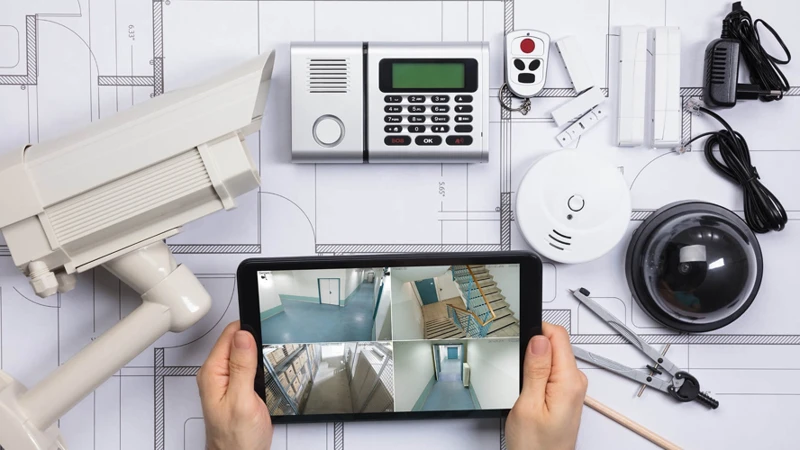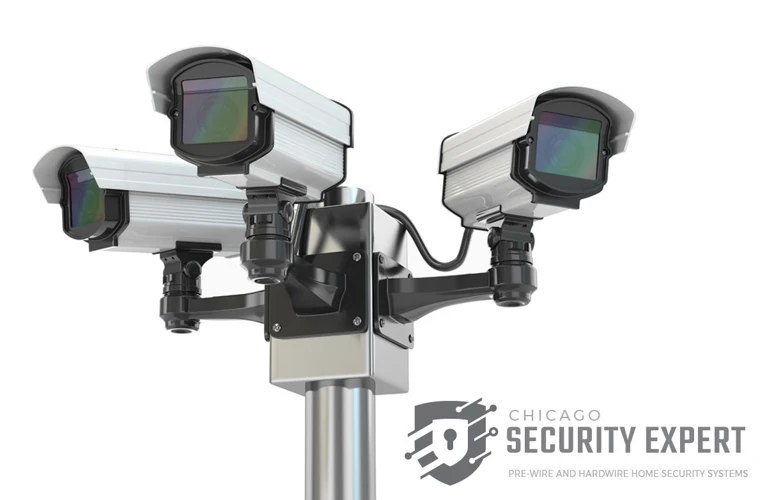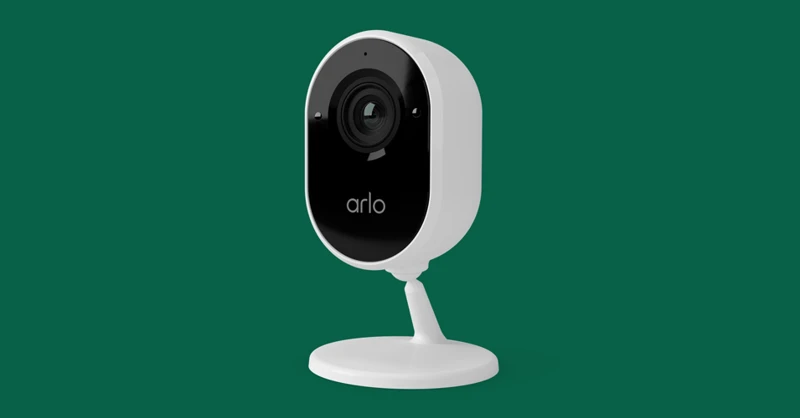In today’s rapidly evolving business landscape, security is a top priority for companies of all sizes. One of the key components of a comprehensive security strategy is surveillance systems that monitor and protect physical assets and personnel. When it comes to choosing a surveillance system, businesses often face the decision between wired and wireless solutions. Both options have their own set of advantages and limitations, and understanding the differences between the two is crucial for making an informed decision. In this article, we will delve into the debate of wired vs wireless business surveillance systems, exploring the pros and cons of each to help businesses determine which option best suits their needs.
Wired Surveillance Systems

Overview
Wired surveillance systems have been a traditional choice for businesses looking to implement robust security measures. These systems rely on physical cables to transmit data between the cameras, recording devices, and monitoring stations. The cables are typically connected via Ethernet or coaxial cables, providing a stable and secure connection for data transmission.
Advantages
One of the main advantages of wired surveillance systems is their reliability. Since they are not susceptible to interference from other wireless devices or signal disruptions, wired systems offer a consistent and uninterrupted feed of video footage. This stability is crucial in high-security environments where constant monitoring is essential.
Additionally, wired systems tend to have higher bandwidth capabilities compared to wireless alternatives. This means that wired cameras can transmit higher quality video footage with greater detail, making it easier to identify faces, license plates, or other important details in the footage.
Another advantage of wired surveillance systems is their security. With data being transmitted through physical cables, wired systems are less vulnerable to hacking or unauthorized access compared to wireless systems, which can be more susceptible to cyber threats.
Limitations
Despite their many advantages, wired surveillance systems also come with some limitations. The installation process for wired systems can be more complex and time-consuming compared to wireless systems, as it involves running cables through walls, ceilings, or underground conduits. This can result in higher installation costs and potential disruptions to the business operations during the installation process.
Moreover, the fixed nature of wired systems can limit flexibility in terms of camera placement. Once the cables are installed, moving or repositioning cameras can be challenging and may require additional cabling work, adding to the overall maintenance costs of the system.
Wireless Surveillance Systems

Overview
Wireless surveillance systems have gained popularity in recent years due to their flexibility and ease of installation. These systems use wireless technology, such as Wi-Fi or cellular networks, to transmit video data from cameras to recording devices or cloud-based storage platforms. Without the need for physical cables, wireless systems offer greater flexibility in camera placement and can be easily expanded or modified as needed.
Advantages
One of the key advantages of wireless surveillance systems is their ease of installation. Without the need for running cables, wireless systems can be set up quickly and with minimal disruption to the business operations. This makes wireless systems an ideal choice for businesses looking for a cost-effective and efficient security solution.
Moreover, wireless systems offer greater flexibility in camera placement. Since the cameras communicate wirelessly with the recording devices, they can be easily moved or repositioned as needed without the constraints of physical cables. This flexibility allows businesses to adapt their surveillance setup to changing security needs or operational requirements.
Another advantage of wireless surveillance systems is scalability. Businesses can easily add more cameras to their system or expand the coverage area without the limitations imposed by physical cables. This scalability makes wireless systems a versatile option for businesses of all sizes, from small startups to large corporations.
Limitations
While wireless surveillance systems offer many benefits, they also come with their own set of limitations. One of the main concerns with wireless systems is potential signal interference or signal loss. Wireless signals can be affected by various factors such as distance, obstacles, or other electronic devices operating on the same frequency, which can result in video quality issues or signal disruptions.
Security is another consideration when it comes to wireless surveillance systems. Since data is transmitted over the airwaves, wireless systems may be more vulnerable to hacking or unauthorized access compared to wired systems. Businesses need to implement robust security measures, such as encryption protocols and secure network configurations, to mitigate these risks.
Integration and Compatibility

Wired Systems
Wired surveillance systems are often compatible with existing infrastructure, such as Ethernet networks or coaxial cables. This makes integration with other security systems, such as access control or alarm systems, relatively straightforward. Businesses can leverage the stable and reliable connection of wired systems to create a comprehensive security ecosystem that seamlessly integrates various components for enhanced protection.
Wireless Systems
Wireless surveillance systems offer greater flexibility in terms of integration with other devices and systems. With the rise of IoT (Internet of Things) technology, wireless cameras can be connected to smart devices or cloud-based platforms for remote monitoring and management. This connectivity allows businesses to access real-time video feeds, receive alerts, or control the cameras from anywhere with an internet connection, enhancing the overall efficiency and effectiveness of the surveillance system.
Cost Considerations
Wired Systems
The cost of wired surveillance systems can vary depending on factors such as the number of cameras, the quality of the equipment, and the complexity of the installation. While the initial upfront costs of wired systems may be higher compared to wireless systems due to the need for cables and labor, they often have lower long-term maintenance costs and a longer lifespan, making them a cost-effective investment in the long run.
Wireless Systems
Wireless surveillance systems are generally more budget-friendly in terms of installation costs, as they eliminate the need for running cables and extensive labor. However, businesses need to consider ongoing costs such as battery replacements for wireless cameras or subscription fees for cloud storage services. Additionally, the scalability of wireless systems can result in higher costs as businesses expand their surveillance coverage or add more cameras to the system.
Remote Monitoring and Accessibility
Wired Systems
With advancements in technology, some wired surveillance systems offer remote monitoring capabilities that allow businesses to access video feeds and control the cameras from a centralized location. While remote monitoring is possible with wired systems, businesses may need to invest in additional equipment or software to enable this feature, adding to the overall costs of the system.
Wireless Systems
Wireless surveillance systems excel in remote monitoring and accessibility, thanks to their wireless connectivity and integration with cloud-based platforms. Businesses can access live video feeds, receive alerts, or review recorded footage from any device with an internet connection, providing real-time visibility into their security operations. This accessibility is especially beneficial for businesses with multiple locations or off-site monitoring needs.
Scalability and Future-Proofing
Wired Systems
Wired surveillance systems are often considered more robust and reliable in the long term, making them a solid choice for businesses looking for a scalable and future-proof security solution. While expanding a wired system may require additional cabling work, businesses can easily integrate new cameras or upgrade existing equipment to meet their evolving security needs without the limitations of wireless signal constraints.
Wireless Systems
Wireless surveillance systems offer unmatched scalability and flexibility, making them an ideal choice for businesses that anticipate future growth or changes in their security requirements. With wireless systems, businesses can easily add more cameras, expand coverage areas, or upgrade to newer technology without the constraints of physical cables. This scalability ensures that businesses can adapt their surveillance system to meet their evolving needs and stay ahead of emerging security threats.
When it comes to business surveillance systems, the choice between wired and wireless surveillance systems is crucial. Learn about the differences in video quality, maintenance needs, and more to make an informed decision for your business’s security needs.
Conclusion
In the wired vs wireless business surveillance debate, both options have their own set of advantages and limitations. Wired surveillance systems offer reliability, security, and high bandwidth capabilities, making them a solid choice for businesses that prioritize stability and data security. On the other hand, wireless surveillance systems provide flexibility, ease of installation, and scalability, making them a versatile option for businesses looking for a cost-effective and efficient security solution.
Ultimately, the choice between wired and wireless surveillance systems depends on the specific needs and priorities of each business. By considering factors such as installation requirements, budget constraints, integration capabilities, and long-term scalability, businesses can make an informed decision that aligns with their security objectives and operational requirements. Whether opting for the stability of wired systems or the flexibility of wireless systems, investing in a reliable surveillance system is essential for businesses to protect their assets, employees, and operations in an increasingly complex security landscape.







